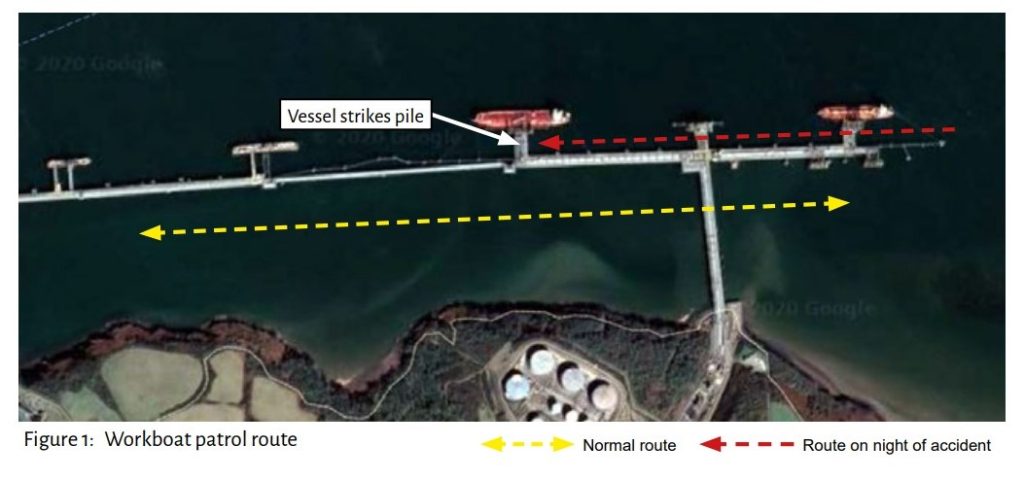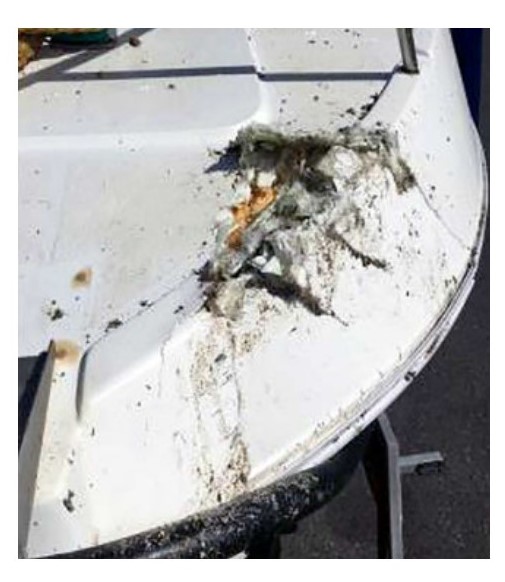UK MAIB issued its first Safety Digest of 2022, in which it describes an incident that happened during patrolling an oil terminal overnight.
The incident
The crew of a 7m workboat were tasked with patrolling an oil terminal overnight, which included checking pipelines for signs of leakage, monitoring terminal infrastructure and general security of moored vessels.
At 18:30, the two crew joined the vessel. With a strong south-westerly wind (24 to 37kts), and a strong outgoing tide causing wind against tide conditions, the sea had a steep chop and the crew knew that they were in for an uncomfortable night. They conducted a short informal dynamic risk assessment but did not make notes.
In fair conditions it was usual to conduct the patrol passing inside of the berths (Figure 1) but, with the high sea state during the previous midnight patrol, they decided to conduct their patrol from the offshore side of the jetty.
However, in an attempt to finish it quickly, the coxswain took the workboat under the access roads (Figure 1). The vessel safely passed under the first two access roads in a westerly direction, but when passing under the third it was pushed bodily to starboard by a wave and the port bow made heavy contact with a pile.

The deckhand briefly lost his footing but was otherwise uninjured. He then proceeded inside the boat to check on the coxswain, who was also unhurt. Damage was found at the bow and a small amount of water was entering the boat.
Bilge pumps were sufficient to stem the ingress while the coxswain informed the company and drove the boat to a nearby pontoon to further assess the damage. Once at the pontoon, the coxswain was taken to the facility’s medical center for a drugs and alcohol test, which proved negative.
The patrol boat returned to its base when an escort was available and was taken out of the water the following morning. Subsequent surveys revealed significant damage to the bow, with delamination of the glass-reinforced plastic as far back as 2m from the bow (Figure 2). The boat was out of action for several weeks for repairs.

Lessons Learned
#1 Margin of safety: Due to the prevailing conditions, the crew had already decided to conduct the patrol on the outboard side of the main jetty. However, to speed it up the coxswain took the boat under the roadway access to the terminal berths. At night, the waves and pilings were more difficult to see, and in marginal conditions it would have been prudent to stay on the offshore side of the terminal throughout the patrol. This might have lengthened the patrol but would have increased the margin of safety and minimized the risk to boat and crew.
#2 Guide: With the weather assessed by the crew as marginal for the relatively small vessel, a larger more capable boat, which was available, might have been a better choice. Incorporating a matrix into operational instructions, which matches suitable conditions for tasks against available assets, can assist crew to plan essential tasks in marginal conditions when there is limited onsite supervision.































































